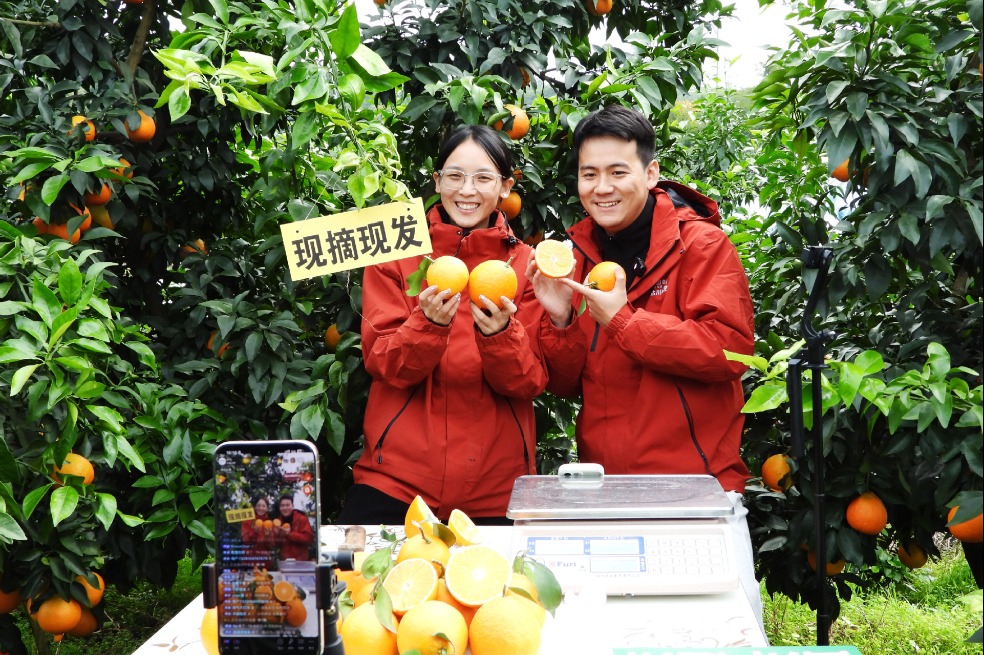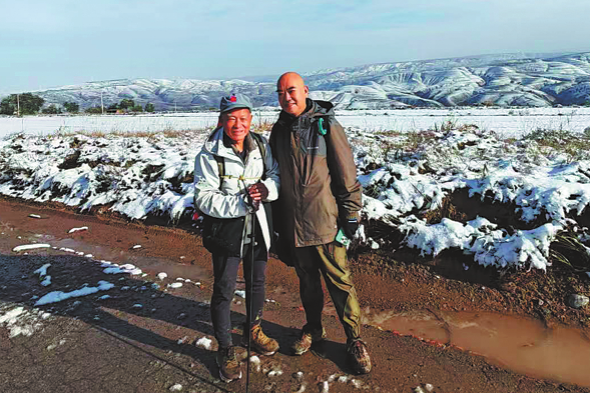Securing the harvest: China bets on high-tech seeds and tech-driven farming


JINAN -- As climate uncertainty and resource constraints pose an increasingly significant threat to traditional agriculture worldwide, China is turning to agricultural technology to safeguard grain security.
Despite persistent droughts in key grain-producing regions earlier this year, these regions have provided encouraging news with predictions for a bumper summer harvest, thanks to advances in seed breeding, smart farming, and a new generation of tech-savvy farmers. Most wheat harvesting across central and northern regions has been completed this month.
China, which has long prioritized grain security, has consistently promoted the adoption of advanced technologies and mechanization in its agricultural modernization drive. In 2024, the country's total grain output exceeded 700 million tonnes for the first time, marking the 21st consecutive year of a bumper harvest.
DROUGHT-TOLERANT VARIETIES
Earlier this year, parts of northern China experienced a combination of prolonged drought, high temperatures and dry hot winds -- factors that typically threaten wheat yields.
Data from the Ministry of Water Resources shows that by late May, the national average precipitation was nearly 20 percent below normal levels. Key northern winter wheat-growing regions had been affected by drought since March.
"In the past, these conditions would have reduced yields," said Liu Fengjun, head of an agricultural cooperative in the city of Gaomi, East China's Shandong province. "But with drought-tolerant wheat varieties, we expect an output of around 9.75 tonnes per hectare."
Shandong, one of China's most important agricultural provinces, frequently experiences recurring droughts and water shortages in normal years. About one-sixth of its 4 million hectares of wheat farmland lacks adequate irrigation.
"I've been planting drought-resistant varieties in dry plots for years. It is often said that farming depends on the weather - we can't control the rain or sunshine, but with smart tech, we can plan ahead and be ready when needed, " Liu stated.
"Breeding drought-tolerant varieties for extreme weather and less fertile soil conditions is critical for boosting grain production," said Cao Xinyou, director of the Crop Research Institute, Shandong Academy of Agricultural Sciences.
SMART FARMING
Elsewhere in the province, farming is transforming thanks to automation and information technology.
In Jiaoqiao township in the city of Zouping, fields baked under the summer sun while farmer Liu Shuguang managed operations from his air-conditioned room. With a few taps on his smartphone, he dispatched autonomous combine harvesters. After harvesting and transporting the wheat and sowing the corn, the machines returned to the garage -- all without human intervention.
"Despite the drought, my yields rose by up to 525 kilograms per hectare," said Liu, who manages a 73-hectare farm using autonomous machinery with satellite navigation and remote sensing. "And I've cut labor costs by 80 percent."
His unmanned farm utilizes BeiDou satellite-guided robots to collect soil samples and drones for high-speed aerial surveys of the fields.
Smart agriculture is flourishing across China with AI, low-altitude technology, and information technology being progressively integrated into farming and grain processing.
Data from China's Ministry of Agriculture and Rural Affairs indicate that scientific and technological advancements contribute to 63 percent of China's agricultural output growth rate. Meanwhile, the country's agricultural mechanization rate for crop production and harvesting has reached 75 percent.
"We used to rely on farming experience, but that wasn't always reliable in abnormal weather conditions," said Liu Jie, who runs a family farm in the city of Dongying. "Now my phone tells me precisely when to irrigate, fertilize, or spray pesticides. With proper management, it is another bumper year."
NEW GENERATION OF FARMERS
In Guangrao county, Yan Binghui, head of Tenghui Agricultural Cooperative, has also benefited from new technologies. "Our yield was estimated to rise by around 7 percent to hit 11.25 tonnes per hectare," Yan said.
The growth is attributed to precision irrigation. Yan's farm utilizes a drip fertigation system that delivers water and fertilizers on demand, mitigating the effects of drought while reducing water usage by 40 percent.
Seven years ago, Yan quit his job in the city to start an agricultural cooperative in his hometown. He consolidated villagers' small plots under centralized management, a trend that is emerging in China's rural revitalization strategy. "We manage the 85-hectare wheat farmland with just four people," he said.
A growing number of more highly educated "new farmers" are returning to the countryside, helping to reshape Chinese agriculture by applying technology and business expertise to fields once dominated by manual labor.
Meanwhile, agricultural experts are being dispatched to rural areas to help the farmers. In the Yanzhou cistrict of Jining, agronomist Li Chuanliang from Shandong Agricultural University trained farmers in field management to respond to drought. His team has also introduced high-quality wheat varieties and technologies.
Li is part of a provincial campaign this year, deploying 18,000 agricultural technicians at multiple government levels to support crop condition monitoring and provide technical training.
"With these experts by our side, we farm with confidence," said Liu Bingyu, deputy Party chief of Xiaomeng township in Yanzhou district.
- China's State Council appoints, removes officials
- Chinese, Vietnamese navies conclude joint patrol in Beibu Gulf
- Co-hosting Games enriches 'one country, two systems'
- China's top court highlights domestic violence cases to raise awareness
- Tibetan large language foundation model launched in Lhasa
- Macaque survives over a year after pig kidney transplant in China




































